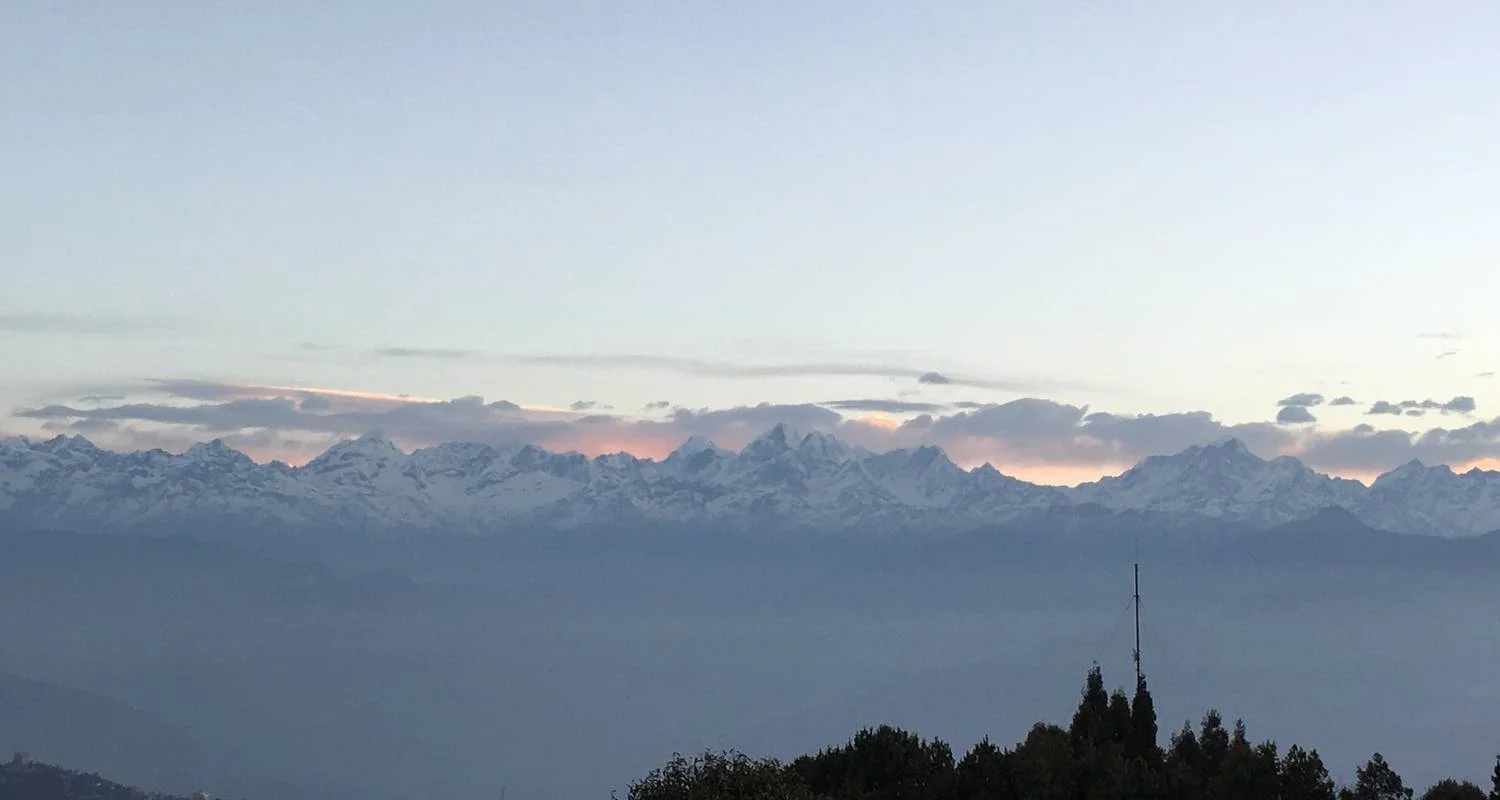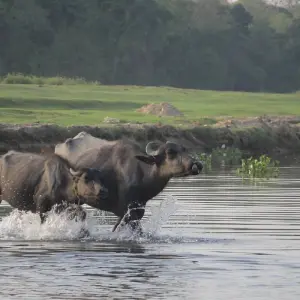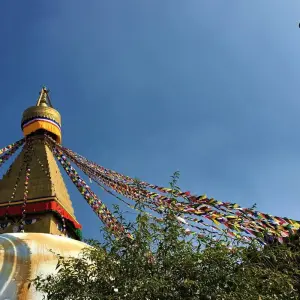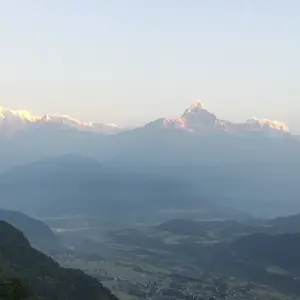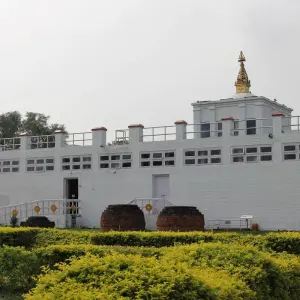We will visit Kathmandu Durbar Square, a UNESCO World Heritage Site, where you can see many typical wood-carved ancient temples and buildings that reflect the ancient Kathmandu city. We'll go to the Ashan and Indrachok markets to try Lassi (a yogurt, water, and fruit drink) and Samosa (a baked potato and vegetable dish).
Then you'll head to Swaymbhunath, the Monkey Temple, where you can observe religious harmony and tolerance between Buddhist and Hindu religions, as well as enjoy a panoramic view of Kathmandu and the Himalayas.
Then you'll visit the UNESCO World Heritage Site of Boudhanath Stupa. It was built in 600 A.D. and is the world's only stupa of its kind, reflecting Buddhism. Kopan Monastery, near Boudhanath, is renowned for Tibetan Buddhism. The Kopan Monastery is located in the beautiful hills above Kathmandu. The setting is serene and peaceful, with breathtaking views of the city below as well as the surrounding countryside and mountains. Bouddha serves Tibetan cuisine. Boudha has gained popularity as Kathmandu's Tibetan food center, thanks in part to its distinct taste from the typical Nepali palate. Popular foods to try in Boudha include Laphing, Khapse, Thukpa, Thentuk, and Shaphaly.
Then you'll visit the Pashupatinath Temple, one of Southeast Asia's most important Hindu pilgrimage sites. You will explore the surroundings and observe the Hindu people's ritual body cremation ceremony on the banks of the holy Bagmati River. In the evening, we will witness the Pashupatinath Aarati. The Bagmati Aarati is a major attraction, and Pashupati is well known for it. In Hinduism, Aarati is regarded as the highest form of prayer. The "Aarati at Pashupatinath" honors the sacred river Bagmati and the Pashupatinath Temple. Followers at the Aarati perform a dance form known as "Tandav." Lord Shiva is performing this dance. As a result, during the Aarati, followers perform Tandav to pay their respects to Lord Shiva.
Accommodation: an overnight stay at Hotel Yatri Suites & Spa, or a similar one.

